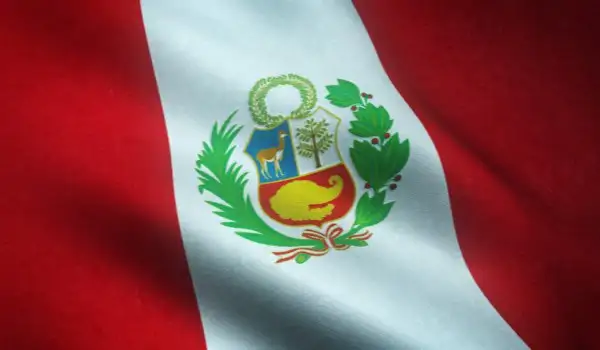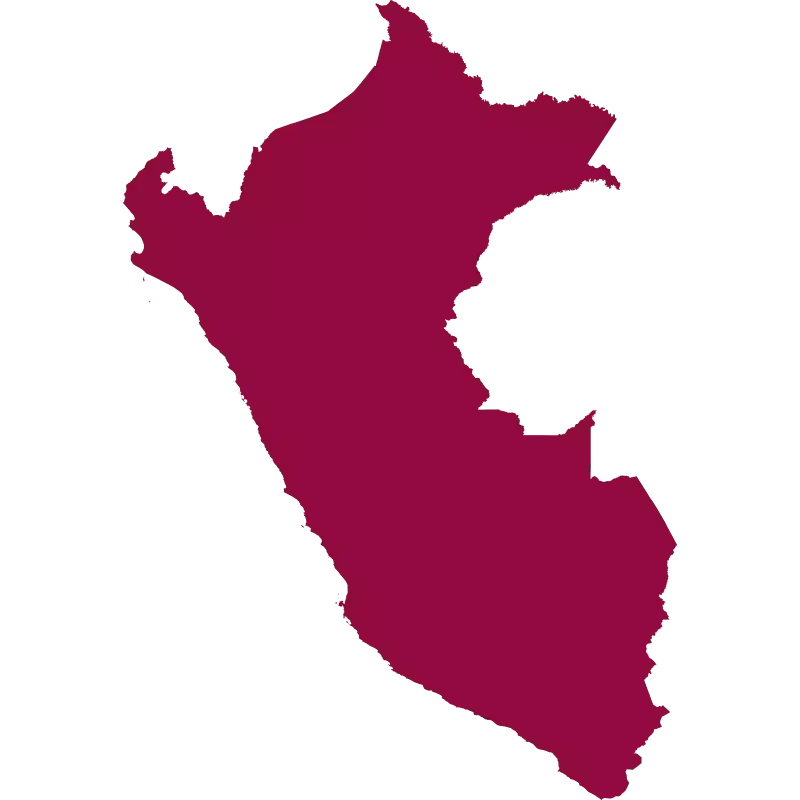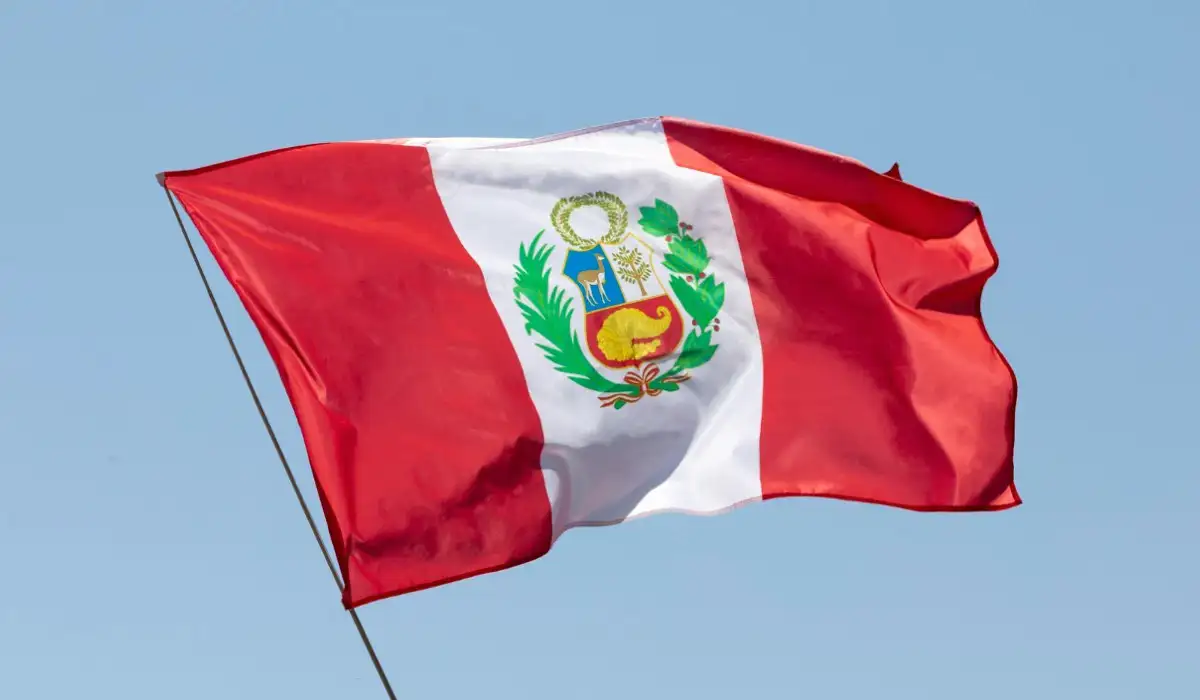Peru Independence Day, also referred to as 'Fiestas Patrias', is celebrated annually on July 28th. The day commemorates Peru's declaration of independence from Spanish rule in 1821, after nearly three centuries of colonial domination.
It's not just one day of festivities but rather two days filled with patriotism, filled with traditional music, vibrant parades, stunning fireworks, and spectacular culinary feasts. It’s a time when Peruvians everywhere reflect on their rich history, honor their heritage, and look toward their country's future with hope, aspiration, and national pride.
Important Facts About Peru Independence Day
Republic of Peru

Peru's Independence
Celebrated annually on July 28th
Background
Peru's independence was declared by José de San Martín, liberating it from Spanish colonial rule in the wake of the Spanish American wars of independence
Symbol
The Peruvian flag and the national coat of arms, which features a vicuña (national animal), a cinchona tree (the national tree), and a cornucopia spilling out gold coins (symbolizing the country's mineral wealth)

Area
496,171 sq mi
Capital
Lima
History of Peru Independence Day
Peru's Independence Day, also known as Fiestas Patrias, is observed every year on the 28th and 29th of July. This significant event in Peruvian history celebrates the day when the country severed its ties with Spain in 1821. The story behind this day is deeply rooted in Peru's struggle against colonial rule and the fight for freedom in South America.
In the 1500s, Spain conquered Peru and exploited the region's wealth of precious metals, reshaping the local Indigenous culture to serve their colonial interests. For nearly three centuries, Peru was the administrative center for Spanish colonizers, forming the Viceroyalty of Peru. However, by the end of the 18th century, the winds of revolution, fuelled by the American and French Revolutions, began to blow across Latin America.
The struggle for Peru's liberation was spearheaded by Argentine military leader José de San Martín and Venezuelan freedom fighter Simón Bolívar. In September 1820, after helping Chile secure its independence, San Martín and his Army of the Andes arrived at Pisco, Peru. They took control of the capital, Lima, on July 12, 1821, and announced the country's independence on July 28.
San Martín took on the role of "Protector of Peru", marking the start of a difficult era of evolution. Despite his efforts, the lingering Spanish loyalists were not completely vanquished. It took the intervention of Simón Bolívar and his victorious Battle of Ayacucho on December 9, 1824, to conclusively end Spanish rule over Peru.
The Independence Day in Peru spans two days; July 28 acknowledges the declaration of independence by José de San Martín, while July 29 pays tribute to the country's Armed Forces and National Police. The celebrations are colorful and resonant throughout the country, featuring lively community gatherings, musical performances, parades, and fireworks.
The holiday equally provides an opportunity to celebrate and engage with traditional Peruvian culture, including culinary delights, regional customs and attire, and music. However, this national celebration is also a time of contemplation on the country's continuous effort toward achieving social justice and equality, representing the unfulfilled dreams and ongoing challenges from the independence era.
Peru Independence Day Timeline
Spanish Conquest
Spanish conqueror Francisco Pizarro invaded Peru, leading to the downfall of the Incan Empire.
Túpac Amaru II Rebellion
An uprising of native and mestizo peasants led by Túpac Amaru II against Spanish rule. Although it failed, it was a significant precursor to Peruvian independence.
Napoleon's Invasion of Spain
The French invasion of Spain discredited the monarchy and inspired independence movements across Spanish America, including Peru.
Expedition of the Liberating Army
The expedition led by José de San Martín from Argentina landed in Peru, intensifying the Peruvian war of independence.
Declaration of Independence
On July 28, 1821, José de San Martín officially declared Peru's independence from Spanish rule.
Battle of Ayacucho
This was the decisive military encounter during the Peruvian War of Independence. It signified the end of Spanish colonial rule in most of South America.
Completion of Independence
The last Spanish stronghold in South America, the Real Felipe Fortress in Callao, was abandoned, finalizing Peru's independence.
Celebration of Independence Day
Independence Day remains a major public holiday in Peru. The day is marked with military parades, patriotic displays, and parties across the country.
Traditions and Customs of Peru Independence Day
Ceremony of Hoisting the National Flag
At the crack of dawn on the 28th of July each year, the Peruvian national flag is proudly lifted at all public institutions throughout the country. This is followed by the national anthem, symbolizing the start of Independence Day.
The Grand Serenade
The night before Independence Day, towns and cities across Peru host an event known as the 'Grand Serenade.' This usually involves locally organized music performances, displays of fireworks and often includes a countdown to the stroke of midnight when Independence Day officially starts.
Parades of Schools and the Military
A key element of Peru's Independence Day celebrations is the organized parades. They feature exhibitions of military might, including military personnel in formation, equipment on display, and breathtaking flyovers by military planes. School children also take part in these parades, having diligently prepared for this occasion for weeks preceding the event.
Cultural Music and Dance
The spirit of Peruvian cultural diversity is most vibrant in its traditional dance forms and music during Independence Day. Each geographical region showcases its own unique traditional folk dances, adding to the richness of the celebration.
Festivals Showcasing Peruvian Cuisine
Food plays an integral part in the celebration of Peruvian Independence Day. Fests showcasing mouth-watering Peruvian traditional dishes, such as Ceviche, Lomo Saltado, and Pisco Sour, are held everywhere in the nation to give people a taste of the country's rich culinary traditions.
Display of patriotic icons
As part of showing their love for the country, Peruvians adorn their homes with the national flag. Many citizens also make it a point to dress in the Peruvian national colors of red and white in honor of their great nation's Independence Day celebrations.
Ideas to Celebrate Peru Independence Day
Authentic Peruvian Dinner Party
Have family and friends over for a gastronomic experience that celebrates Peruvian Independence Day. Prepare traditional Peruvian dishes like ceviche or lomo saltado for an exciting culinary adventure.
Peruvian Arts and Crafts Day
Engage the children in some Peruvian-themed activities during the day. It could range from creating small versions of Machu Picchu, painting inspired by Peruvian artists or replicating traditional Peruvian fabric designs.
Peruvian Movie Night
Spend the evening viewing notable Peruvian cinema or documentaries that delve into Peru's rich heritage in celebration of Independence Day. Accompany the experience with popcorn and Inca Kola for an added Peruvian touch.
Peruvian Music Dance Party
Dance the night away with the rhythmic beats of Peru such as marinera and huayno. A local Peruvian folk group can intensify the experience, or you could learn some traditional dance routines online.
Flag Hoisting and Stories
To truly appreciate the day, hoist the Peruvian flag and narrate the stories of Peru's journey towards independence to educate the younger members of the family.
Community Parade
Plan a community procession to commemorate Peru's culture. You can have traditional music, folk dances, Peruvian-themed displays, and participants in Peruvian attire to cultivate the festive spirit in the community.
Learn Basic Quechua
Make this Independence Day more special by learning a few select phrases in Quechua, one of Peru's native languages. This initiative enlightens everyone about Peru's rich linguistic diversity.
7 Interesting Facts About Peru
Home to the World's Highest Sand Dune
Cerro Blanco, the tallest sand dune worldwide, is situated in Peru's Sechura Desert near the Nazca Lines. From its base to the summit, it reaches a height of 1,176 meters.
Peru's Varied Topography
Exhibiting the diversity of its climates, Peru has 84 out of the 117 life zones on earth.
The Potato's Birthplace
Peru, the original home of the potato, is known for its more than 3,000 types of this crop. The country's international potato center has preserved the seeds of 4,000 varieties.
Machu Picchu's True Function
The actual purpose of Machu Picchu isn't clearly known, despite its global fame. It's speculated to be either a recreational hub for Incan rulers, a prison, or perhaps a sanctuary for women.
The Incan Empire's Short Existence
Even though it has had a significant historical effect, the Incan Empire lasted a mere 100 years, from 1438-1533.
The Floating Islands of Peru
Resident Uros people call the floating islands on Lake Titicaca, situated at the border of Peru and Bolivia, their home. The islands are constructed from reeds.
Peru's National Animal
Peru's national animal is the Vicuña, with the Andean cock-of-the-rock named as the national bird. The Cinchona tree, the source of malaria curing substances quinine and chloroquine, is the national tree.
Peru Independence Day FAQs
Next Peru Independence Day Dates
| Year | Date | Day |
|---|---|---|
| 2023 | July 28th | Friday |
| 2024 | July 28th | Sunday |
| 2025 | July 28th | Monday |
| 2026 | July 28th | Tuesday |
| 2027 | July 28th | Wednesday |
| What is the pattern? | Every July 28th | |
Peru Independence Day Word Search
- Peru
- Independence
- Lima
- Liberation
- Ceviche
- Inca
